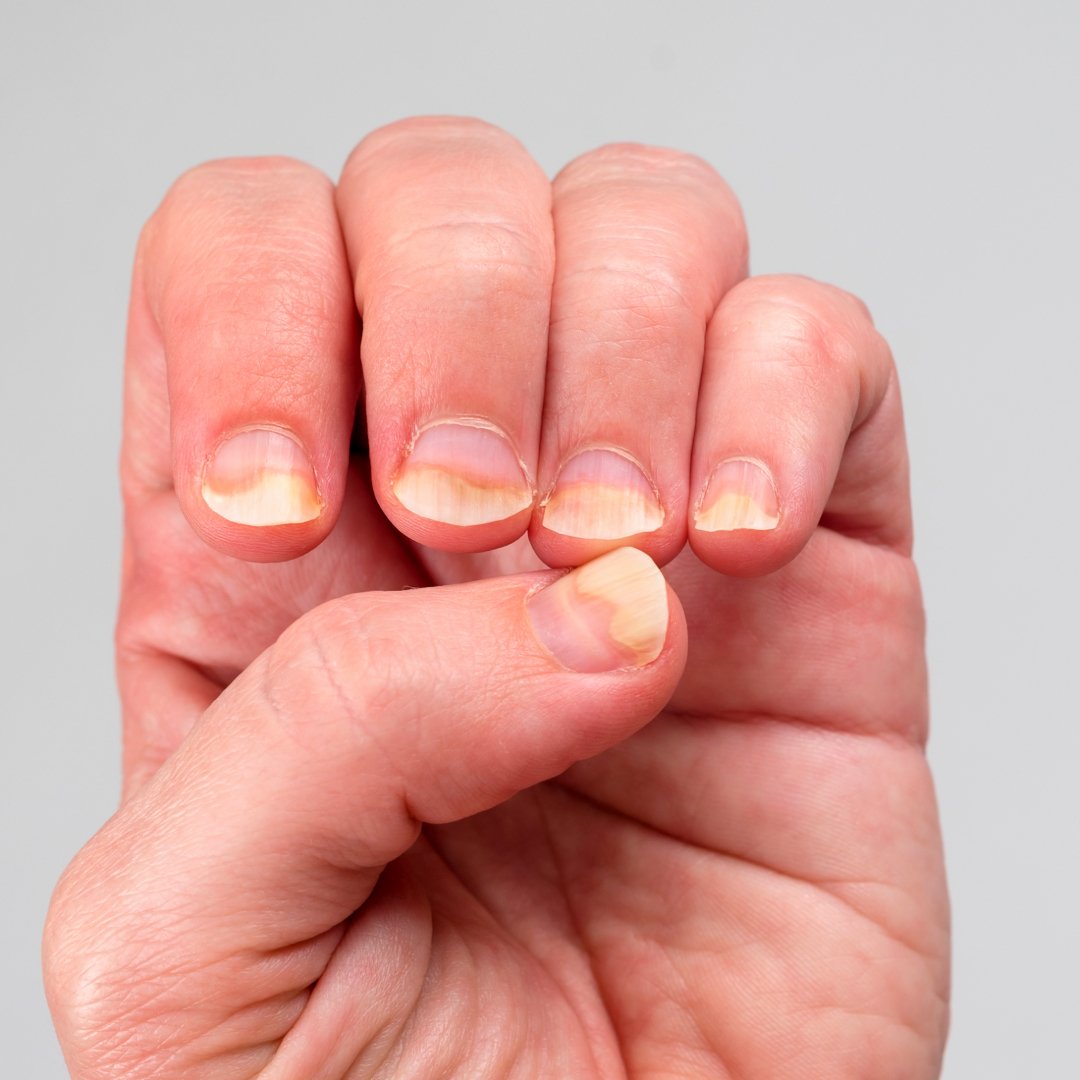What Your Nails Reveal in Ayurveda: A Guide to Health Through Nakha Pariksha
What Your Nails Reveal in Ayurveda:
In Ayurveda, nails are much more than tools for scratching an itch or showing off colorful polish; they're windows to your inner health! The ancient science of Nakha Pariksha, or nail examination, offers insights into your body's balance, bone health (asthi dhatu), and doshic imbalances. Let’s dive into what your nails might be telling you and how you can address these signals holistically.
Nail Analysis in Ayurveda
Texture:
Brittle Nails: Often a sign of weak bones or nutrient deficiencies, linked to Vata imbalances. The body might be lacking hydration or calcium.
Ridged Nails: Longitudinal ridges may indicate poor nutrient absorption or chronic stress affecting digestion.
Color:
Pale Nails: Suggest anemia or poor circulation, commonly tied to Vata disturbances.
Yellowish Nails: May point to Pitta-related issues such as inflammation, jaundice, or liver concerns.
Bluish Tint: Could signal Kapha imbalances or oxygen deficiency.
Shape:
Spoon-Shaped Nails: Often associated with iron deficiency (Kapha disturbance in digestion).
Clubbed Nails: May indicate respiratory or cardiac issues affecting the lungs or heart, an imbalance requiring deeper investigation.
Lines & Grooves:
Horizontal Grooves: Typically reflect past illnesses or disruptions in the body's metabolic systems.
White Spots: Can be linked to zinc deficiency or Kapha imbalances involving toxin buildup.
What Can You Do to Restore Balance?
Ayurveda doesn’t just diagnose; it provides holistic remedies tailored to individual needs. Based on nail observations, here are actionable tips:
Support for Vata Imbalance:
Nourish bones and nails with calcium-rich foods like sesame seeds, almonds, and leafy greens.
Include warm, hydrating beverages like herbal teas and soups to combat dryness.
Massage nails and hands with sesame or almond oil to promote circulation and hydration.
Balance Pitta Disturbances:
Cool your system with foods like cucumber, cilantro, and coconut water.
Avoid hot, spicy, and oily foods that aggravate Pitta.
Practice calming routines like meditation to reduce stress-induced inflammation.
Kapha Detox:
Stimulate digestion with ginger, turmeric, and warm water first thing in the morning.
Engage in regular exercise to enhance circulation and combat stagnation.
Avoid heavy, sugary, and processed foods.
General Nail Care in Ayurveda:
Trim and clean nails regularly to prevent infection and promote healthy growth.
Apply natural nail oils like castor oil or neem oil for nourishment.
Add Ayurvedic supplements like Triphala or Ashwagandha under professional guidance for overall well-being.
The Bigger Picture
In Ayurveda, nails are just one piece of the diagnostic puzzle, they work alongside tongue analysis, pulse readings, and skin observations to offer a complete picture of your health. Paying attention to your nails can be a simple yet effective way to recognize early signs of imbalance and take action before deeper issues arise. So, the next time you glance down at your nails, take a moment to decode their message. They may be saying more than “needs a manicure.”
So, while general tips are helpful, true Ayurvedic wellness is highly personalized. Consulting an Ayurvedic counselor can provide tailored guidance based on your unique constitution and health goals. Professional practitioners use ancient techniques, including pulse diagnosis (Nadi Pariksha) and customized herbal formulations, to bring your body back into harmony.
So, whether your nails are showing signs of deficiencies or just hinting at doshas imbalances, Ayurveda has answers waiting for you. Find an experienced Ayurvedic counselor here and begin your journey toward vibrant health today! Check the link below for more information.

